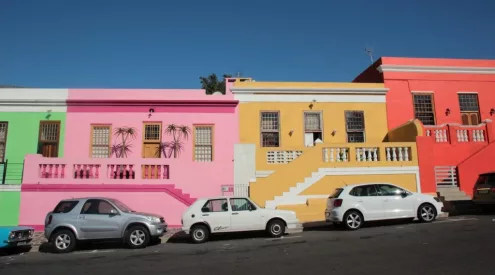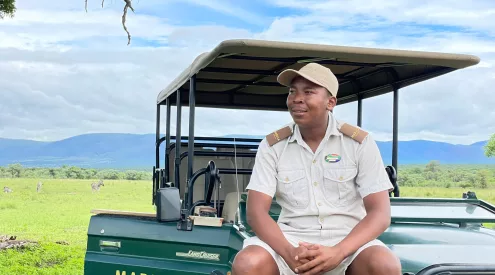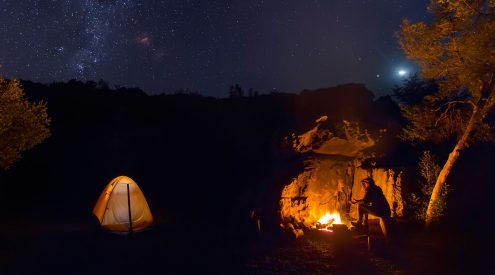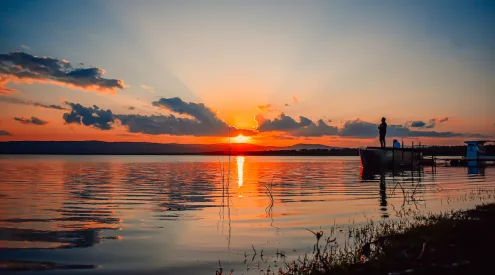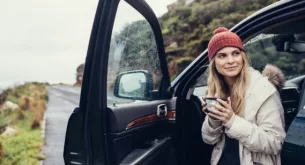Africa survives on a diet of rumour and half truth and nowhere is this truer than in the travel industry.
All too often the reality doesn’t match the hype. The ‘real Africa’ is industry code for shocking roads and exhorbitant prices; ‘untouched’ means except for poachers; and ‘wildlife Eden’ could mean anything from lots of animals to a boomslang and a half eaten apple.
The only way, I have discovered, to find out if a destination lives up to its marketing brochures is to visit for yourself. Hard work, I know, but someone has to do it.
I had a number of misconceptions about the Serengeti National Park, most of them based on conversations with people who had never been there. Like a lot of people more familiar with the relatively affordable, self-driving safari options in Southern Africa, I had just about talked myself out of a trip to the Serengeti or its Kenyan neighbour the Maasai Mara.
When I was lucky enough to travel there, with Maasai Wanderings (www.maasaiwanderings.com) I found things were not as I had expected. Here are 10 things I got wrong about the Serengeti:
1. I thought it was going to be crowded with zebra-striped minivans
The first thing that struck me about the Serengeti, as Mrs Blog and I drove in with our guide, Godwin, was how empty it was. Not of animals, but of people.
I’d already learned that Godwin was not one to follow the pack. He had a radio in his Land Cruiser, but he never turned in on once, in all the time we spent with him. Not for him, the easy way. He never listened in for reports of sightings and he never broadcast his sightings to the rest of the world.
The Serengeti is big. Huge, in fact, and many times the size of the Maasai Mara. It was quite easy to do as we did – head off on our own – and not see another vehicle for most of the day, except when we returned to the main roads.
Also, there were no zebra striped minivans in sight. Godwin assured me that the Mara was full of dalla dallas (as the safari and commuter vans are called in Tanzania), all jockeying for lion sightings and blocking each other in the process. At this point I reminded myself that in Africa the grass is always drier on the other side of the fence. I’ve yet to meet an African, of any shade, who has anything nice to say about his or her neighbouring country. The only way for me to decide if the Mara was as good as or better than the Serengeti was to go there myself, hopefully one of these days.
We drove from one spectacular sighting to another and had them all to ourselves. Only on our third day, near the park’s main camp, Seronera, did we deign to join a traffic jam of a dozen Land Rovers and Cruisers that was queued to see some lions sleeping in trees. This is a peculiarity of this part of the Serengeti, where the grass is longer than elsewhere and the lions rest up in the heat of the day and use the trees to look for prey.
2. I thought it wouldn’t live up to its reputation
It was the TV test, and like millions of satellite and cable TV viewers around the world my impression of the Serengeti had been formed by Animal Planet and the National Geographic Channel. Could there really, I wondered, be that many animals in one place?
Well, yes and no.
It did live up to its reputation as a ‘wildlife Eden’ – in fact in my mind it surpassed what I was expecting, but that was due in no small part to our guide.
On our first day Godwin drove off into the wide open wilds of the Ndutu Plains and as far as I could see, in any direction, all the way to the horizon, were animals. There were tens, perhaps hundreds of thousands of wildebeest and zebra. There were Thompson’s gazelles and grant’s gazelles, and hartebeest and, in among them all, the predators.
We saw 18 cheetah in three days. Either you truly understand the significance of that number or you don’t, but trust me… that is a hell of a lot of cheetah.
It was hard keeping up with the lion sightings, and they started to blend into one another.
We saw two hyena chase down, kill and eat a wildebeest in front of our very own eyes. I could write several pages just on that – the way the hyena nipped the beast’s muscles to imobilise it, then rested for a little while before devouring their prey while the victim was still alive…
We saw two serval, a male and a female, eating an oribi in the middle of the day. Trust me, that’s also rare where I usually stay (and it was the only oribi I’d ever seen in my life!).
On the second day (and this is where I get back to the yes and no answer about the number of animals in the Serengeti) we saw nothing for quite a few hours. Yes, nothing. The migration was nearing its terminus, where the wildebeest go to give birth, but it was still meandering slowly along. Plains that were black with animals one day could be bare but for grass the next.
Godwin couldn’t rest on his laurels – he had to know where the animals were each day. On the second, though, we went in search of black rhino, among some granite kopjes where they were known to hang out. We didn’t find them, but it was a lovely drive.
My point here is that while the Serengeti more than delivered, if you don’t know where you’re going, or you arrive at the wrong time of the year, you might just see nothing much at all. If I was to do what I’d like to do, and drive my Land Rover up here again from South Africa, I’d also want to hook up with a local guide to make sure I wasn’t wasting my time.
Aside from our expedition to look for rhinos the fantastic sightings just kept on coming. A bull elephant coming up to our vehicle and resting his trunk on the roof next to my arm; a leopard slinking along a branch; two male lions chasing a female through a confused traffic jam of wildebeests…
In between sightings, Godwin kept up entertained with his personal renditions of easy listening hits by The Bangles, Mariah Carey and Leann Rimes. Fortunately there wasn’t too much time between sightings.
3. I thought driving off road would harass the wildlife
I learned about African wildlife in Kruger, and I learned very quickly to follow the rules. To me, driving off road was the height of environmental vandalism. When I saw pictures of zebra striped Dalla Dallas surrounding a lion or cheetah I dutifully ‘tsk-tsked’ my disapproval.
Surely, I thought, this amounted to cruel harassment of wild animals.
Well… yes, I’m sure it does when it’s done the wrong way. Godwin explained what he was doing when he drove off road. For a start, there are only certain areas of the Serengeti where this is allowed, and one has to pay an extra surcharge to leave the main roads.
When he spotted our first cheetah he explained what he was doing, and how he was taking care not to cut the animal off, or hinder its progress or give it any unfair advantages while it was hunting. The cheetah looked at us and didn’t seem phased at all by our presence. After a short while Godwin peeled off and left the cat to its own devices.
I’d also had some concerns about the effect of off road driving on the natural environment. The short grass plains, however, seemed as hard and almost as smooth as driving on a tennis court. We didn’t seem to leave tire tracks and I didn’t see any signs of damage caused by vehicles.
4. I thought I would get sick of seeing wildebeests
It was more the opposite, in fact.
I tried and I tried and I continually failed to take a picture that could convey the sheer wonder of seeing so many wild animals in one place. It became my mission – and, again, I failed – to try and capture this.
Like Godwin said, the best pictures are the ones that live in our mind. I can still see it, and I can almost feel that sense of awe when I think about it, but I can’t show you a picture that captures it. You have to see it for yourself.
5. I thought the campsites would be crap
We stayed in a luxury tented camp called Nasikia, operated by Maasai Wanderings. The Nasikia Camp is mobile, and relocates every few months to where the migration happens to be. The tents are walk-in east African safari numbers with en suite bathrooms, including a bucket shower topped up with hot water on request. They were beautiful.
However, as I was already planning a self-drive return, I asked Godwin if he would take us to one of the Tanzanian National Parks camp sites. He took us to two, in fact, near Seronera.
I’d heard and read reports of these being run down, with filthy ablution blocks and no water. In the camps I saw this was not the case and while the facilities were not as spotless or as well maintained as, say, the Kruger Park’s they were perfectly acceptable in my opinion. Each camp had a communal banda, or shelter, for cooking and eating, and bathrooms with showers.
Nasikia Camp was located on what is known, for a very good reason, as a ‘special’ camp site. Special sites are scattered throughout the park and are characterized by their spectacularly beautiful locations and views. They have no facilities (you have to bring your own water and dispose of your own waste) and cost more than a a site at the more developed camps, but I think if I came back I’d fork out the extra money for the view.
Nasikia was located on a site overlooking the Ndutu Plains. We could see for miles and the night before our arrival lion and elephant had walked through the camp. Lovely.
6. I thought our guide would be as bad as the one we had in Kenya
I’d already learned, from our trip to the Ngorongoro Crater (I mean, Caldera), that Godwin was one of the best, if not the best the field guide I’d ever met in my life.
Before I came to Tanzania I was worried that our guide in the Serengeti would be as uncommunicative and as embarrassingly ignorant of birds and wildlife as the one we’d had in Kenya’s Tsavo East national park.
In our long conversations Godwin informed me that there was no national qualification standard for field guides in Tanzania. This was something that he, the company he works for, and others have tried to address. Trainee guides attend privately run courses, but, anecdotally, few ever fail once they have paid their fees. What is needed is a government or industry body to set exams and approve qualifications.
Until then, a bit of research will pay off if you are going to travel with a safari operator. I didn’t do that, but I consider myself very fortunate to have gone with the company that I did.
One question you might ask a prospective operator is if they set a daily limit on how far their game viewing vehicles can drive. We drove all day, every day, with Godwin, but he told us that some companies impose a kilometre limit on their drivers to save money on fuel and increase their margins. These guides are more likely to rely on their radios to save time and money and simply follow the pack to crowded sightings.
7. I thought sticking my head out of a pop top vehicle would scare away the animals
Again, one of the number one no-no’s in South African national parks is to stick one’s head out of the sun roof of one’s car. The animals in a park like Kruger are used to the outline of a vehicle, but not of a human head sticking out of it, and are prone to run away if someone breaks this rule.
Well, in the Serengeti, the lion, cheetah, wildebeest and everything else are A-OK with you sticking up out of your vehicle like a jack-in-the-box. It just goes to show, this is a very different part of Africa, and that things that hold true in one part of the continent have nothing to do with another part of it.
8. I thought the beer would be cheap
It wasn’t, and neither was anything else in east Africa, compared to South Africa. There, I have said it. The 300-kilogram gorilla that was lurking in the corner while I’ve been writing this series of blogs is out in the open.
A friend of mine just got a quote for a three-week safari around Rwanda and Tanzania and he tells me it will be the most expensive three weeks of his life.
Whether you self drive, or go with an operator, a trip to the Serengeti is going to cost you more than hiring a Golf Chico for a day trip to Kruger.
9. I didn’t think it would be worth the money
It is.
The Serengeti, and the Ngorongoro Crater, were such amazing experiences that I have to recommend them, providing you either do your research very thoroughly or go with a reputable operator.
I went to see the mountain gorillas 12 years ago, in Uganda, and paid what I thought was an exhorbitant US$150 for the privilege of spending an hour with them. I wondered, before that trip, if it was going to be worth it, but it was. Whenever I think of that trip, like now, all I want to do is go back. It’s now US$500 for an hour with the gorillas, but I would pay it.
Trust me, even if you’ve spent a lot of time in the bush in other parts of Africa, as I have, the Serengeti, if you catch the migration at any time, is different enough and magnificent enough to seriously consider forking out the bucks.
10. I thought it would be a once in a lifetime experience
I spend two to three months of the year in the Kruger Park, researching and writing my books, because I can. It’s beautiful, the game is fantastic, and it’s very affordable, compared to all other African game parks.
I would love to be able to spend a couple of months in the Serengeti, but I can’t afford to. Even on a self-drive trip in a fully equipped vehicle it would cost two people US$200 per day just for entry fees and camping fees.
I thought my Serengeti trip would be a once in a lifetime experience. But when I think about it, I get the same feeling I get when I remember my trip to see the mountain gorillas.
I want to go back. I was wrong.







